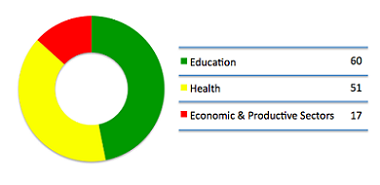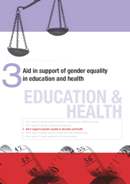Main findings
- In the education and health sectors, the shares of bilateral aid that target gender equality and women's empowerment are significantly higher than in other sectors: 60% and 51% respectively, compared to only 17% in the economic and productive sectors.
Education
- Aid committed to gender equality in the education sector by DAC members amounted to USD 4.7 billion on average per year in 2009-10. This represented 60% of the total aid to the education sector.
- Particularly high shares of aid targeted gender equality in support for basic and secondary education - 68% and 69% respectively. In fragile and conflict-affected states, 82% of aid to basic education targeted gender equality.
- One third of the USD 4.7 bilion of aid targeting gender equality in the education sector was committed through scholarships and student costs in donor countries, rather than at the country level.
- Support for gender equality in education does not always match needs. Only 68% of aid to basic education in Sub-Saharan Africa - the same as the average share - included gender equality objectives despite very high gender inequality in primary school enrolments in this region.
|
|
Aid targeting gender equality in the education, health and economic & productive sectors

DAC members committed large shares of bilateral aid targeting gender equality to the education (60%) and health (51%) sectors in 2009-10. In contrast, aid to the economic and productive sectors had a marginal focus on gender equality (17%).
|

